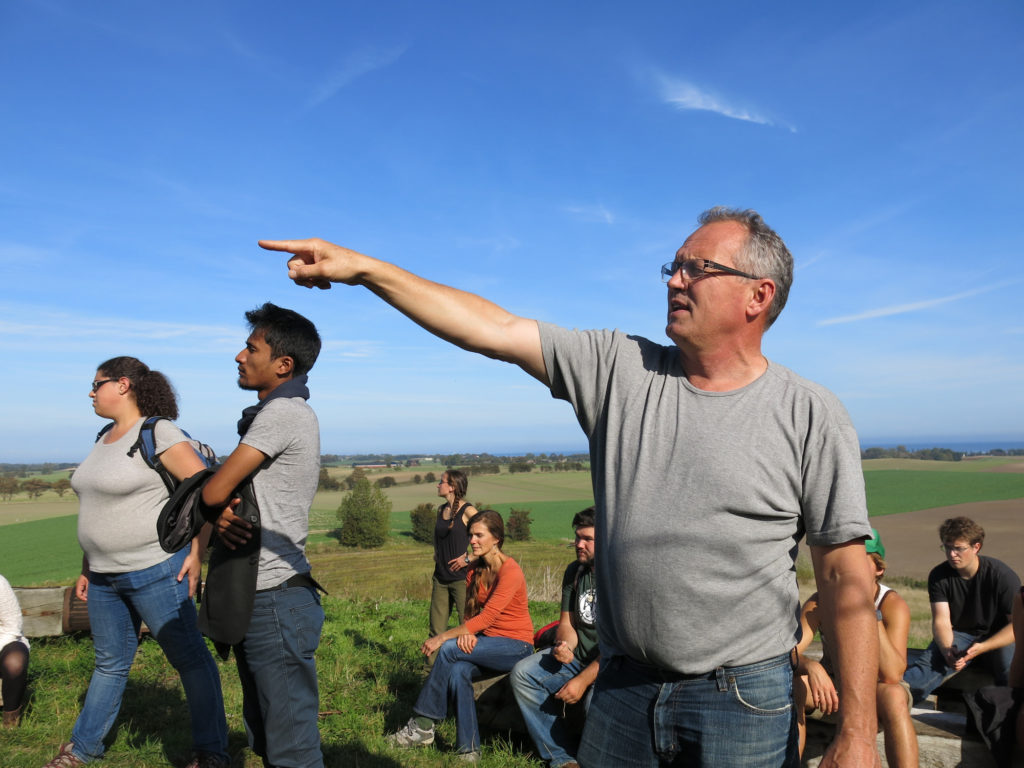This post was originally published on the Fund for Maine Islands’ Collaborative for Island Energy Research and Action blog. To read more blog posts and learn about the five islanders who participated in the program, go here.
______________________________________
A year after the Collaborative for Island Energy Research and Action’s trip to Samsø, Sam Saltonstall reflects on the five things that he learned there that are helping him stay focused on his own energy projects on Peaks Island.
Looking back at the incredible opportunity to visit Denmark’s Samsø Island we CIERA participants were given by the Island Institute and the Fund for Maine Islands, I am struck by how skillfully the renewable energy leaders of Samsø took advantage of their good fortune, which consisted of a robust average wind velocity of 17 meters per second, an 80 million dollar grant won in a competition held by the federal government, and an island economy in need of rejuvenation. These factors and a growing presence of solar power have helped the people of Samsø make far more energy from renewable sources than they consume every year.
The leaders of this effort showed themselves to be skillful communicators, mindful of the different communities on Samsø. They did their homework on the financial and technical aspects of renewable energy. They used discretion in regard to the siting of their wind generators. And they understood that if their neighbors were given the opportunity to participate in the construction and ownership of renewable energy facilities, this could help them bring about the energy revolution they sought.
But how to translate all of this back to a Maine island? After a year spent implementing energy efficiency efforts here on Peaks, five learnings have helped me stay focused on island energy work:
- Clean energy efforts have to be based on local realities. It makes no sense to bang your head against obstacles, be they regulatory or economic, that are not going away any time soon. Choosing a path where progress is possible seems the better course.
- Incremental progress is not to be sniffed at. Taking the long perspective on implementing change is not a cop out. It took the Samsø folks two decades to get where they are today. Impatience is sometimes a good thing, but measuring progress in years rather than months is both realistic and better for your mental health. Persistence trumps impatience.
- Sharing the ownership of energy efforts by communicating frequently, trusting in others to do their part, and stressing collaboration over confrontation builds community. Without a sense of community, energy efforts are harder to pull off. So efforts that can benefit a community rather than a wealthy few make good sense.
- The ground is shifting underneath us. Feedback loops are increasing the speed of global warming. Forest fires, floods and heat waves are making people more aware of the need to connect the dots and get off fossil fuels. Technological progress related to battery storage, demand response opportunities and the ever increasing efficiency and lower cost of solar and wind offer hopeful opportunities to diminish climate change. We mustn’t be discouraged by the current playing field.
- Supporting clean energy advocacy efforts that frame the energy revolution as a battle against fossil fuel interests standing in the way of progress appeals to me, but will not appeal to all. Rolling up our sleeves to implement energy efficiency in our local communities is just as important and has broader appeal. Energy efficiency is for many people a pocketbook issue, not an environmental issue.
In the end, it’s up to each of us to define the role we wish to play in keeping our island communities sustainable and the environment healthy. There are so many worthy ways to get involved. The learnings above have helped me stay focused on the role I wanted to play as a CIERA participant working to bring energy efficiency to Peaks Island.


